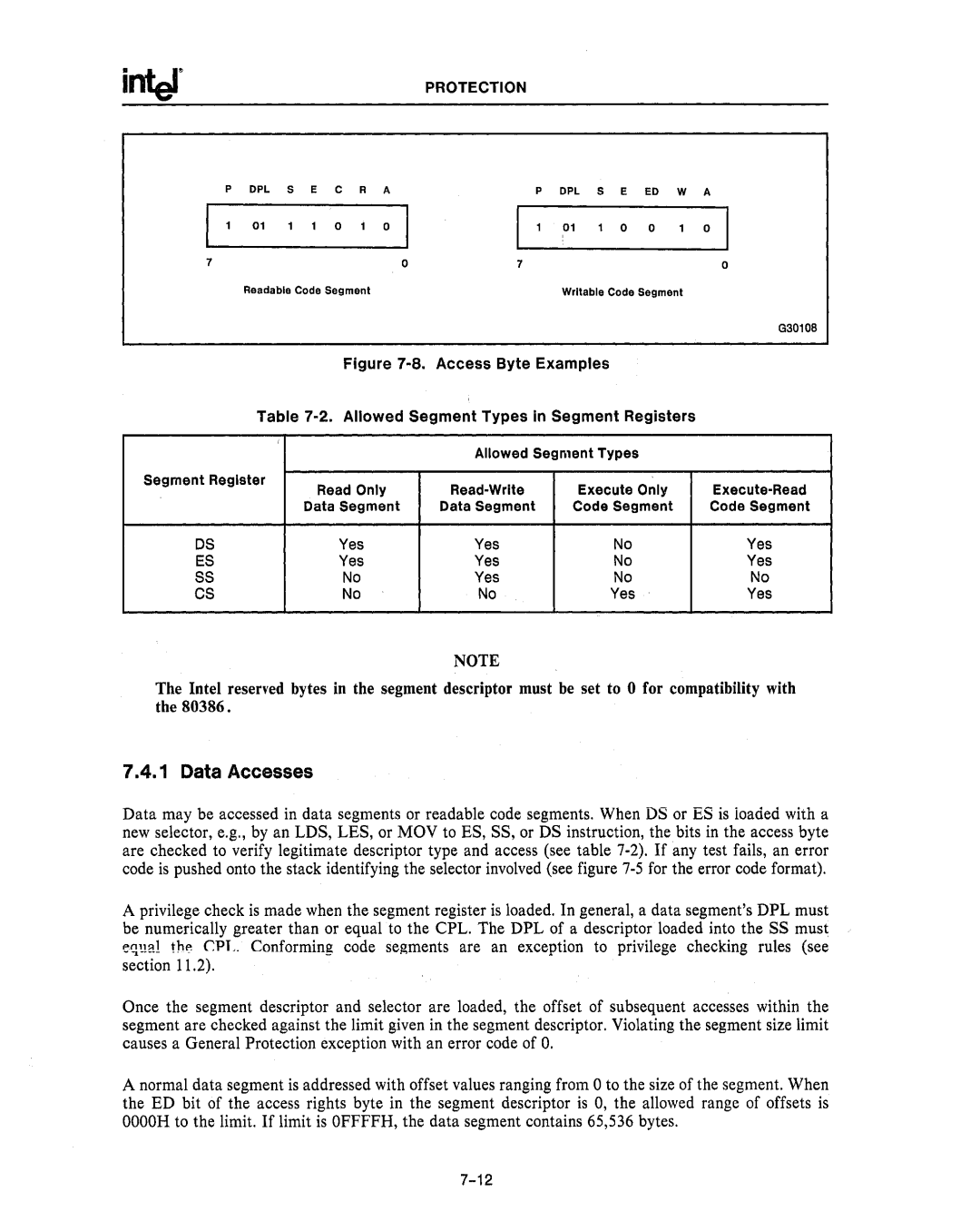
PROTECTION
P DPL 5 E C R | A | P | DPL | 5 | E | ED W A | ||
1 | 0 | 1 | 0 | I 1 | 01 | 1 | 0 | 0 |
|
|
|
| |||||
7 |
|
| o | 7 |
|
|
| o |
Readable Code Segment |
|
| Writable Code Segment | |||||
G3010B
Figure 7-8. Access Byte Examples
Table 7-2. Allowed Segment Types in Segment Registers
(
|
| Allowed Segnlent Types |
| |
Segment Register | Read Only | Execute Only | Execute'Read | |
| ||||
| Data Segment | Data Segment | Code Segment | Code Segment |
OS | Yes | Yes | No | Yes |
ES | Yes | Yes | No | Yes |
SS | No | Yes | No | No |
CS | No | No | Yes | Yes |
NOTE
The Intel reserved bytes in the segment descriptor must be set to 0 for compatibility with the 80386.
7.4.1Data Accesses
Data may be accessed in data segments or readable code segments. When DS or ES is ioaded with a new selector, e.g., by an LDS, LES, or MOV to ES, SS, or DS instruction, the bits in the access byte are checked to verify legitimate descriptor type and access (see table
A privilege check is made when the segment register is loaded. In general, a data segment's DPL must be numerically greater than or equal to the CPL. The DPL of a descriptor loaded into the SS must eq'1!"J the C.PL Conforming code segments are an exception to privilege checking rules (see section 11. 2).
Once the segment descriptor and selector are loaded, the offset of subsequent accesses within the segment are checked against the limit given in the segment descriptor. Violating the segment size limit causes a General Protection exception with an error code of O.
A normal data segment is addressed with offset values ranging from 0 to the size of the segment. When the ED bit of the access rights byte in the segment descriptor is 0, the allowed range of offsets is OOOOH to the limit. If limit is OFFFFH, the data segment contains 65,536 bytes.
